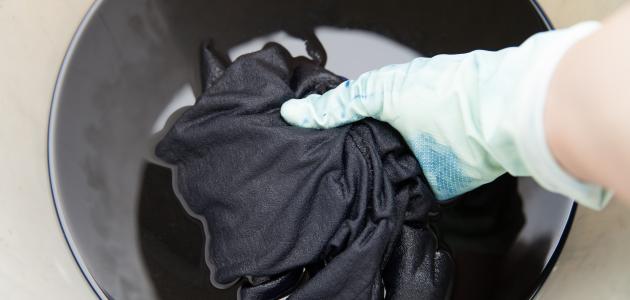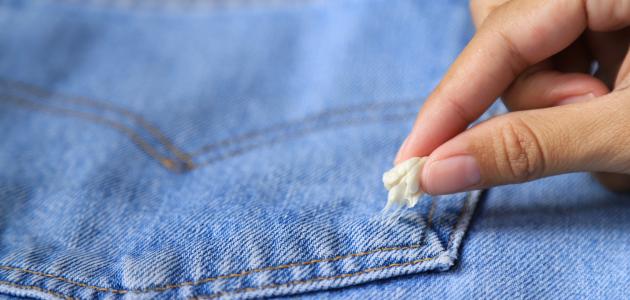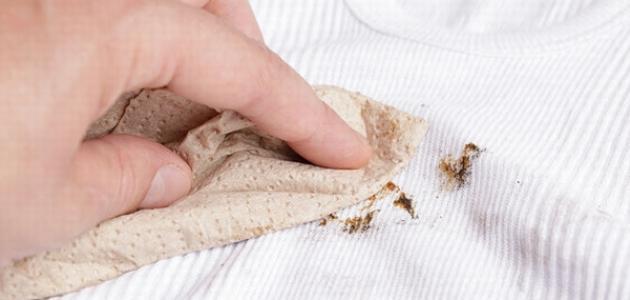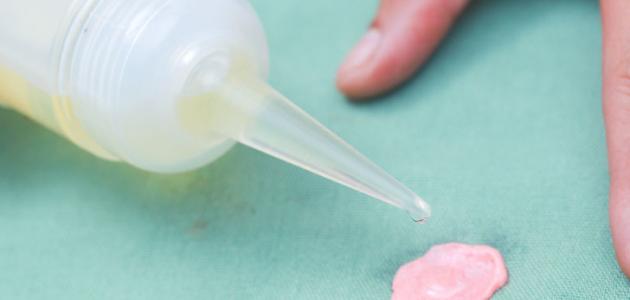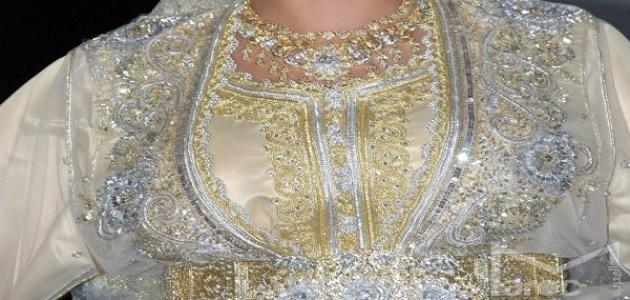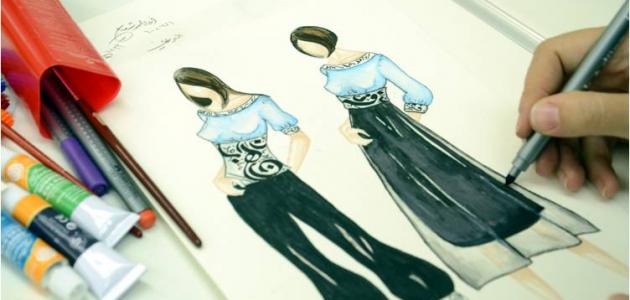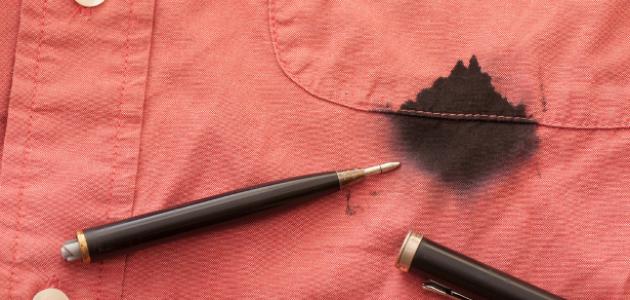How to dye clothes at home
There are many ways in which clothes can be dyed at home, including the following:
Dye the clothes during the wash cycle
Before starting to dye clothes, precautionary measures must be taken to ensure a good result and a fabric with a consistent color, by determining the type of fabric first, as some natural types such as: cotton, wool, silk, and linen absorb dyes quickly, while the rest of the industrial fabrics except nylon They need a longer time and special dyes to obtain the desired color, including: polyester, acetate, acrylic, and mixed clothes of both types as well, such as cotton and polyester fabrics together, and the clothes are dyed while they are inside the top washing machine, and not the front automatic, during the washing cycle in the following way :
- Fill the washing machine with hot water.
- Add the dye, and stir with a metal spoon to ensure that it is well mixed.
- One cup of salt is added if the fabric to be dyed is cotton, and replaced with a cup of vinegar if it is made of silk, neon, or wool.
- The dye is tested by dipping a piece of cloth or tissue paper, adjusting and adding more dye as needed.
- Wet the clothes to be dyed with water, then put them in the washing machine.
- The wash cycle is set to 30 minutes, then it starts.
- The washing cycle is restarted after the end of the previous cycle, using hot water for washing, then cold water for rinsing.
- Clothes are removed from the washing machine after completion and dried in the air, or with a washer dryer.
- The washing machine is cleaned immediately after completion by filling it with hot water, adding one cup of chlorine bleach and running it a full cycle.
Dye clothes on the stove
Clothes can be dyed by placing them on the stove, by following these steps:
Read also:types of cloth- A suitably sized pot is filled with enough water so that the garment can move freely in it.
- Cover the pot and place it on the stove to heat it until it reaches a boil.
- Follow the instructions and instructions on the dye box, where the dye solution is placed in a pot of boiling water and mixed well.
- The clothes are placed in the dye pot while the stove temperature is kept low, and the pieces are stirred slowly and continuously.
- Pay attention to the first 10 minutes when putting on clothes; As it is the most important in the process.
- The clothes are left in the dye solution for approximately 60 minutes, and this period is determined based on the type of fabric to be dyed and the product instructions written on the box as well.
- The clothes are removed when they reach the desired color, paying attention that they may look a little darker when wet.
- The clothes are squeezed, excess dye is removed, and washed well.
Dyeing and fixing clothes in a natural way
Clothes are dyed naturally without the need to buy the previous ready-made dye, by following these steps:
- Covering the work site with newspapers or an old cloth to ensure that it is not dirty.
- Clothes are washed and cleaned well by soaking them according to the type of cloth, where cashmere, wool, and silk fabrics are soaked using a mild dish detergent with warm water, and wool specifically with cold water. As for clothes made of cotton and linen, and others that include cellulose, they are soaked for 1- 4 hours with a mixture of soda ash and warm water.
- The clothes are soaked with warm water and some mineral substances that help fix the color, and placed on the stove for 20 minutes on a low heat, then it is turned off and left until it cools, including the alum element, and the iron element that can be obtained from rusty nails but is used for brown and dark dye, and copper Or copper sulfate used for green dyes, knowing that these materials are toxic, and therefore it is taken into account that they do not reach food.
- The clothes are soaked with the specialized stabilizers for 60 minutes.
- The clothes are rinsed with cold water before starting to dye them, then the dyes are made at home by boiling the natural ingredients according to the desired color, as follows:
- The color orange: carrots, onion peels.
- Brown color: tea, coffee, walnuts, oak bark, walnut shells.
- green color: artichoke, spinach, mint leaves, grass, nettles, peach leaves.
- Pink Color: raspberry, cherry, red and pink roses.
- the colour blue: blue or purple berries, purple grapes.
- Red or brown colour: pomegranate, beet, bamboo, and hibiscus.
- Gray or black colour: berries, walnut shell, iris roots.
- Purple red colour: red sumac berries, daylily, raspberry.
- the yellow color: bay leaves, sunflower petals, St. John's wort, dandelion flowers, yellow sweet pepper, turmeric, celery leaves.
- After boiling the plants slowly for 1-4 hours, leaving them soaked overnight, then filtering the dyes extracted from them, they are placed in a saucepan of a suitable size to dye clothes with.
- The clothes are placed inside the pot on the stove, left to boil for a sufficient time, then left soaked inside the pot for 1-8 hours, and it can be left overnight for a better result.
- Fabrics are rinsed with cold water to filter them, then washed well to remove excess dye and obtain the desired color using cold water as well, and dried under the sun.
Tips for preserving the colors of clothing dyes when washing them
The colors of the clothes can be preserved and their fading reduced by following some important tips, most notably the following:
Read also:How do I remove gum from clothes?- Separation of clothesThis means placing brightly colored clothes in a separate wash cycle from dark colored ones, or light, creamy and white ones in particular.
- Use collage sheets to colorThese are cloth sheets that include special materials in their composition to effectively fix the colors of clothes, by limiting the fading of the dye, or the accumulation of dirt and other colors that change the color of the fabric, and cause it to fade or become dyed.
- Use of special cleaners: As there are special detergents that contain color-fixing materials, and are designed to suit the type of fabric and fabric from which the clothes are made.
- Read the instructionsIt is recommended to read the instructions and instructions written on the clothes in the form of stickers that may be inside or behind the neck opening.
- Pay attention to the duration of the washing cycleClothes should not be left in the washing machine for a long time under the pretext of cleaning them from dirt. Rather, use a washing cycle with an appropriate duration for the type and color of the pieces and the degree of their soiling, so that the long number of times of rinsing and drying does not cause fading and fading of their colors.
- Avoid sunlight: As the strong sunlight causes the colored dyes of the clothes to fade, and thus fade, and in return it is recommended to dry the clothes in the open air, away from the sun and leave them in the shade for a sufficient period.
clothing colors
Textile colors are carefully processed and designed before being presented to customers, by dyeing them with special machines and treating them mechanically, and choosing several attractive and distinctive colors that take into account the different tastes of customers and their special ways of coordinating them, through successive manufacturing processes that include opening fabrics, adjusting them, and washing them in a way that guarantees entry The new color in it and its adhesion, but sometimes with repeated washing of these clothes, one feels that their colors have faded and become old, and therefore he can re-dye them at home through many methods that will be mentioned later.
Read also:Why do astronauts wear special clothes?